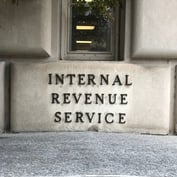Few financial products generate as much emotion from both supporters and critics as permanent life insurance. The granddaddy of permanent insurance is whole life insurance, which still represents a third of the individual life insurance market according to LIMRA.
The percentage of Americans who own permanent life insurance has declined in recent decades, and many advisors outside of the insurance industry are unfamiliar with the basics of the product structure.
The inability for fee-only advisors to be compensated from the sale of a permanent insurance product leads some advisors to dismiss a product they view as a lesser alternative to traditional investments. In reality, a product like whole life can be integrated into a financial plan for clients who benefit from its unique tax and performance characteristics.
The primary purpose of a whole life policy is to provide a lump sum of money at death. To provide the death benefit, the whole life product incorporates two basic elements: a mortality expense and a tax-deferred savings component called cash value.
The performance of the policy will depend on the competitiveness of the cost of insurance and the tax-advantaged growth in the cash value.
The design of a whole life policy reflects the mechanics of human mortality. While the cost of mortality protection rises with age, the premium on a whole life policy remains level.
How is this possible?
For a younger person, the whole life premium generally consists of a small percentage that pays the annual mortality protection cost and a larger portion that is set aside in a reserve and invested by the insurance company in a general account.
The cash values that build over time are a result of the performance of the general account, along with the insurance company’s success with expense management and favorable mortality experience. The cash value growth offsets the higher mortality costs later in life, thus creating the level premiums.
The value from the policy will eventually be returned to your heirs (net of expenses) in the form of a tax-free death benefit or living benefits can be accessed during the insured’s life via the cash values inside the policy. Unlike other after-tax investments outside of retirement accounts, the growth on the cash values is not immediately taxed.
This is one of the most important tax benefits of a whole life policy, which results in long-term compounding advantages versus something like a taxable investment.
Unlike the investment income “tax drag” of a traditional investment account, the amount that your beneficiaries receive at death is tax-free, and a portion of the cash values can also be accessed as living benefits without being taxed.
How are the premium dollars invested in the general account portfolio of an insurance company?
The purpose of these investments is to ensure that the insurance company can pay policyholder claims, which means that their portfolios should consist primarily of diversified high-quality bonds.









 February 08, 2021 at 01:18 PM
February 08, 2021 at 01:18 PM











